A Novel Treatment: Effects of Nano-Sized and Micro-Sized Al2O3 on Steel Surface for the Shear Strength of Epoxy–Steel Single-Lap Joints
Abstract
:1. Introduction
2. Experimental
2.1. Raw Materials
2.2. Steel Surface Treatment
2.3. Preparation of Single Lap Joints
2.4. Scanning Electron Microscopy (SEM) Analysis
2.5. FTIR Analysis
2.6. Contact Angle Tests
3. Results and Discussion
3.1. Al2O3 Suspension of Tests
3.2. Steel Surface Treatment
3.2.1. Surface Topography of Steel by Different Treatments
3.2.2. Contact Angle Tests
3.3. Interfacial Tests between Steel and Resin
Single-Lap Joint Tests
4. Conclusions
- A new steel surface treatment method was developed. The steel was treated with a suspension of nano- or micro-Al2O3 particles in a mixture of ethanol/water using the dip-coating process. The particles were previously treated, or not treated, with silane. Compared to the method in which the adhesive is blended with nano-particles, the present dip-coating method showed better results in the enhancement of the interfacial shear strength between the steel—epoxy adhesive.
- Steel treated with the suspension including silane-treated nano-Al2O3 increases the bond strength between the steel—epoxy by 51.8%, much higher than those treated with the micro-Al2O3. For the later case, the increase is about 28.1%. Nano-Al2O3 is more likely to form multi-scale microstructures on the treated steel surface.
- Particles in suspension treated with a silane coupling agent was previously necessary to modify and functionalize the nano-particles and finally results in enhanced surface treatment effect. FTIR analysis shows that a silane coupling agent can form covalent bonds with Al2O3 particles. SEM analysis showed the silane coupling agent forming thin films with Al2O3 particles on the steel surface.
Author Contributions
Funding
Institutional Review Board Statement
Informed Consent Statement
Data Availability Statement
Conflicts of Interest
References
- Yuan, W.; Yang, T.; Yang, G.; Liu, S.; Du, Y.; Liu, C. Enhancing mechanical properties of adhesive laminates joints using ultrasonic vibration-assisted preprocessing. Compos. Struct. 2019, 227, 111325. [Google Scholar] [CrossRef]
- Akpinar, S.; Ozel, A. Experimental and numerical determination of the thermal cycle performance of joints obtained with nanostructure-doped nanocomposite adhesives. Compos. Part B Eng. 2019, 174, 106959. [Google Scholar] [CrossRef]
- Akpinar, I.A.; Gültekin, K.; Akpinar, S.; Akbulut, H.; Ozel, A. Experimental analysis on the single-lap joints bonded by a nanocomposite adhesives which obtained by adding nanostructures. Compos. Part B Eng. 2017, 110, 420–428. [Google Scholar] [CrossRef]
- Budhe, S.; Banea, M.D.; de Barros, S.; da Silva, L.F.M. An updated review of adhesively bonded joints in composite materials. Int. J. Adhes. Adhes. 2017, 72, 30–42. [Google Scholar] [CrossRef]
- van Dam, J.P.B.; Abrahami, S.T.; Yilmaz, A.; Gonzalez-Garcia, Y.; Terryn, H.; Mol, J.M.C. Effect of surface roughness and chemistry on the adhesion and durability of a steel-epoxy adhesive interface. Int. J. Adhes. Adhes. 2020, 96, 102450. [Google Scholar] [CrossRef]
- Zhou, H.; Liu, H.-Y.; Zhou, H.; Zhang, Y.; Gao, X.; Mai, Y.-W. On adhesive properties of nano-silica/epoxy bonded single-lap joints. Mater. Des. 2016, 95, 212–218. [Google Scholar] [CrossRef]
- Avasthi, P.; Kumar, A.; Balakrishnan, V. Aligned CNT Forests on Stainless Steel Mesh for Flexible Supercapacitor Electrode with High Capacitance and Power Density. ACS Appl. Nano Mater. 2019, 2, 1484–1495. [Google Scholar] [CrossRef]
- Sydlik, S.A.; Lee, J.-H.; Walish, J.J.; Thomas, E.L.; Swager, T.M. Epoxy functionalized multi-walled carbon nanotubes for improved adhesives. Carbon 2013, 59, 109–120. [Google Scholar] [CrossRef]
- Wan, Y.-J.; Gong, L.-X.; Tang, L.-C.; Wu, L.-B.; Jiang, J.-X. Mechanical properties of epoxy composites filled with silane-functionalized graphene oxide. Compos. Part A Appl. Sci. Manuf. 2014, 64, 79–89. [Google Scholar] [CrossRef]
- Hussain, A.K.; Sudin, I.; Basheer, U.M.; Yusop, M.Z.M. A review on graphene-based polymer composite coatings for the corrosion protection of metals. Corros. Rev. 2019, 37, 343–363. [Google Scholar] [CrossRef]
- Zhao, Z.; Chen, M.; You, C.; Li, W.; Tie, D.; Liu, H. Effect of α-Al2O3 additive on the microstructure and properties of MAO coatings prepared on low carbon steel. J. Mater. Res. Technol. 2020, 9, 3875–3884. [Google Scholar] [CrossRef]
- Zhang, W.; Au, P.-I.; Zhang, X.; Fan, H.; Sun, C.; Saunders, M.; Leong, Y.-K. Spherical α-Al2O3 suspensions layered sequentially with anionic and cationic polyelectrolytes: Chemistry, rheology and TEM images. Powder Technol. 2018, 338, 716–724. [Google Scholar] [CrossRef]
- Wan, P.; Zhao, N.; Qi, F.; Zhang, B.; Xiong, H.; Yuan, H.; Liao, B.; Ouyang, X. Synthesis of PDA-BN@f-Al2O3 hybrid for nanocomposite epoxy coating with superior corrosion protective properties. Prog. Org. Coat. 2020, 146, 105713. [Google Scholar] [CrossRef]
- Marin, E.; Lanzutti, A.; Lekka, M.; Guzman, L.; Ensinger, W.; Fedrizzi, L. Chemical and mechanical characterization of TiO2/Al2O3 atomic layer depositions on AISI 316 L stainless steel. Surf. Coat. Technol. 2012, 211, 84–88. [Google Scholar] [CrossRef]
- Wang, W.; Xian, G.; Li, H. Surface modification of ramie fibers with silanized CNTs through a simple spray-coating method. Cellulose 2019, 26, 8165–8178. [Google Scholar] [CrossRef]
- Zheng, H.; Guo, M.; Shao, Y.; Wang, Y.; Liu, B.; Meng, G. Graphene oxide–poly(urea–formaldehyde) composites for corrosion protection of mild steel. Corros. Sci. 2018, 139, 1–12. [Google Scholar] [CrossRef]
- Zheng, H.; Shao, Y.; Wang, Y.; Meng, G.; Liu, B. Reinforcing the corrosion protection property of epoxy coating by using graphene oxide–poly(urea–formaldehyde) composites. Corros. Sci. 2017, 123, 267–277. [Google Scholar] [CrossRef]
- Ding, S.; Xiang, T.; Li, C.; Zheng, S.; Wang, J.; Zhang, M.; Dong, C.; Chan, W. Fabrication of self-cleaning super-hydrophobic nickel/graphene hybrid film with improved corrosion resistance on mild steel. Mater. Des. 2017, 117, 280–288. [Google Scholar] [CrossRef]
- Avilés, F.; Sierra-Chi, C.A.; Nistal, A.; May-Pat, A.; Rubio, F.; Rubio, J. Influence of silane concentration on the silanization of multiwall carbon nanotubes. Carbon 2013, 57, 520–529. [Google Scholar] [CrossRef]
- Parhizkar, N.; Ramezanzadeh, B.; Shahrabi, T. Corrosion protection and adhesion properties of the epoxy coating applied on the steel substrate pre-treated by a sol-gel based silane coating filled with amino and isocyanate silane functionalized graphene oxide nanosheets. Appl. Surf. Sci. 2018, 439, 45–59. [Google Scholar] [CrossRef]
- Chang, J.-K.; Lin, C.-S.; Cheng, W.-J.; Lo, I.H.; Wang, W.-R. Oxidation resistant silane coating for hot-dip galvanized hot stamping steel. Corros. Sci. 2020, 164, 108307. [Google Scholar] [CrossRef]
- Garcia-Ivars, J.; Alcaina-Miranda, M.-I.; Iborra-Clar, M.-I.; Mendoza-Roca, J.-A.; Pastor-Alcañiz, L. Enhancement in hydrophilicity of different polymer phase-inversion ultrafiltration membranes by introducing PEG/Al2O3 nanoparticles. Sep. Purif. Technol. 2014, 128, 45–57. [Google Scholar] [CrossRef]
- Sarac, I.; Adin, H.; Temiz, S. Investigation of the effect of use of Nano-Al2O3, Nano-TiO2 and Nano-SiO2 powders on strength of single lap joints bonded with epoxy adhesive. Compos. Part B Eng. 2019, 166, 472–482. [Google Scholar] [CrossRef]
- Akpinar, I.A.; Gültekin, K.; Akpinar, S.; Akbulut, H.; Ozel, A. Research on strength of nanocomposite adhesively bonded composite joints. Compos. Part B Eng. 2017, 126, 143–152. [Google Scholar] [CrossRef]
- Peng, B.; Takai, C.; Razavi-khosroshahi, H.; Fuji, M. Effect of silane modification on CNTs/silica composites fabricated by a non-firing process to enhance interfacial property and dispersibility. Adv. Powder Technol. 2018, 29, 2091–2096. [Google Scholar] [CrossRef]
- Adamczyk, Z.; Weronski, P. Application of the DLVO theory for particle deposition problems. Adv. Colloid Interface Sci. 1999, 83, 137–226. [Google Scholar] [CrossRef]
- Hou, S.; Su, S.; Kasner, M.L.; Shah, P.; Patel, K.; Madarang, C.J. Formation of highly stable dispersions of silane-functionalized reduced graphene oxide. Chem. Phys. Lett. 2010, 501, 68–74. [Google Scholar] [CrossRef]
- Orouji, S.M.; Naderi, R.; Mahdavian, M. Controlled oxidation of mild steel by potassium permanganate solution to enhance protective functioning of silane coatings. Colloids Surf. A Physicochem. Eng. Asp. 2020, 603, 125251. [Google Scholar] [CrossRef]
- Zhang, L.; Ren, Y.; Luo, Q.; Ying, X.; Xu, H.; Xuan, J. A Novel Method to from Well-adhered γ-Al2O3 Coating in 316L Stainless Steel Microchannels. Energy Procedia 2015, 75, 2044–2048. [Google Scholar] [CrossRef] [Green Version]
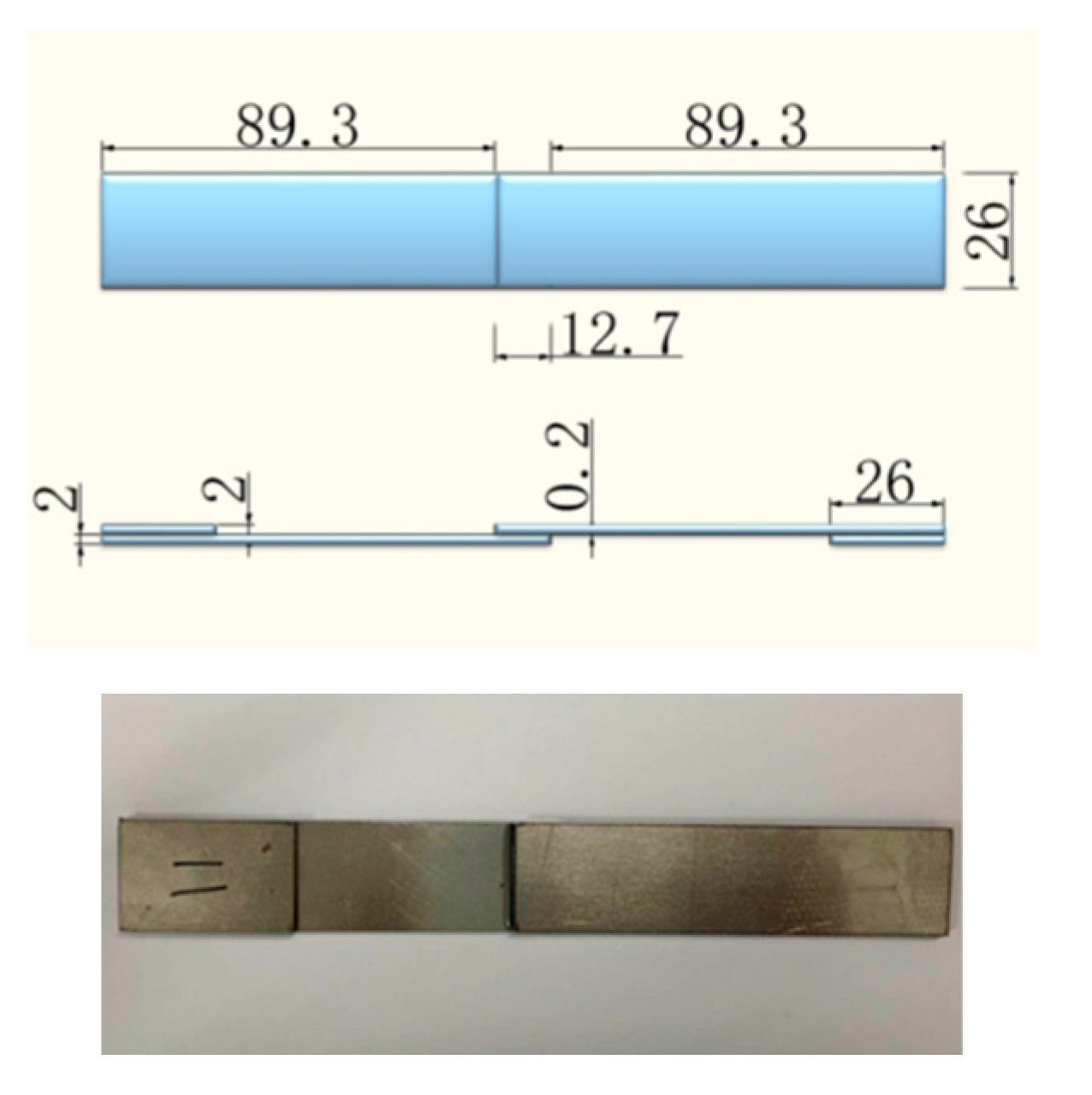
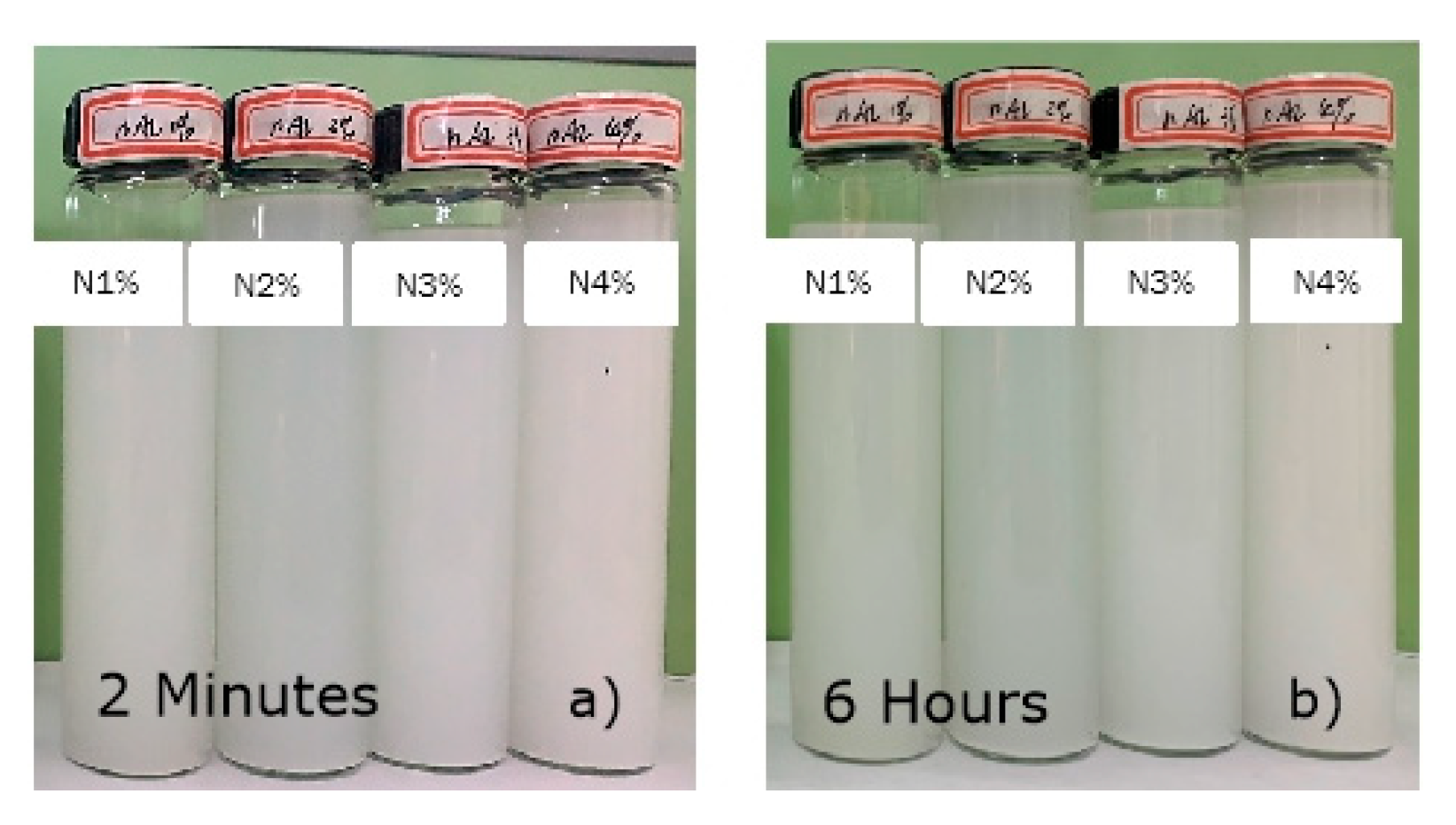
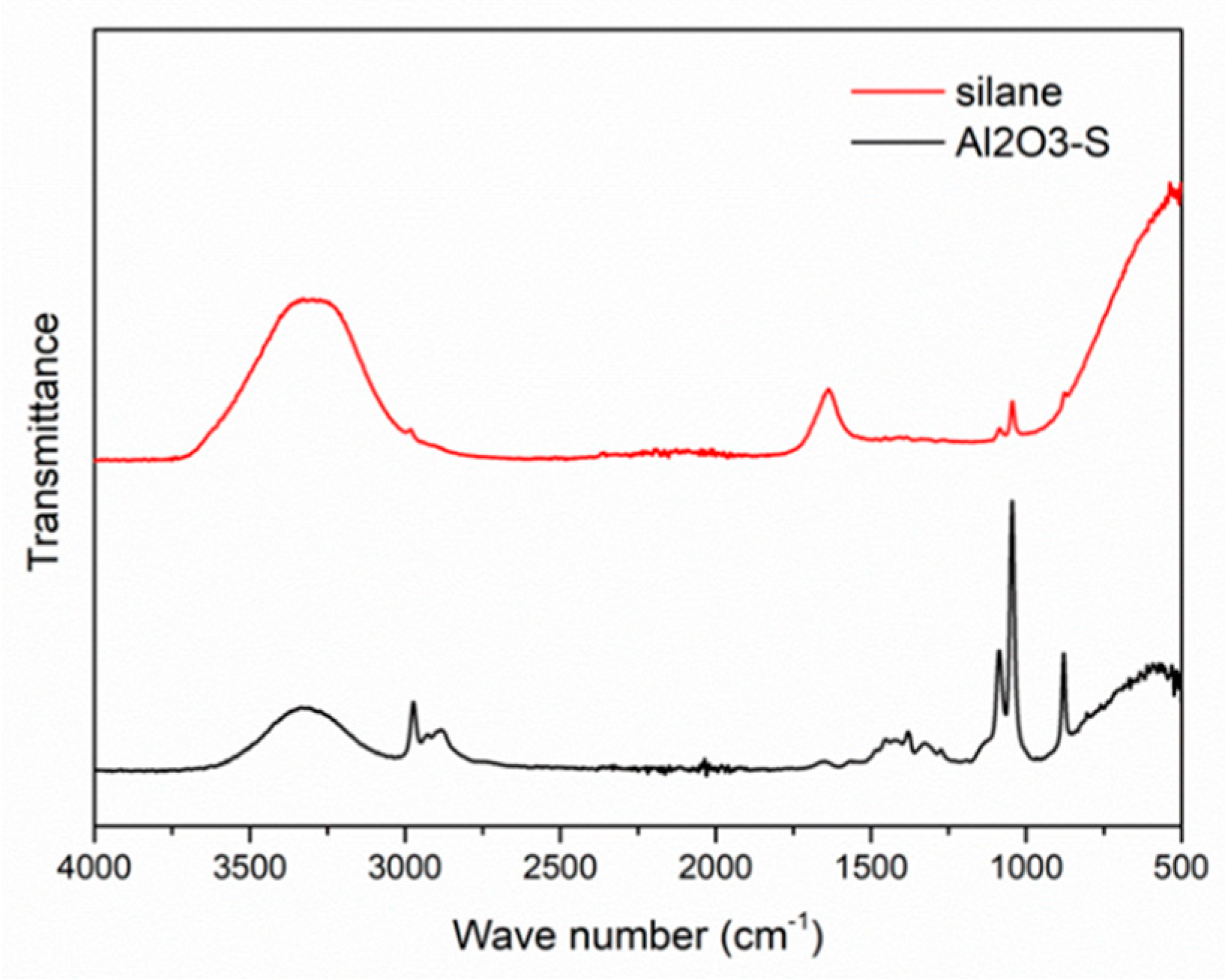

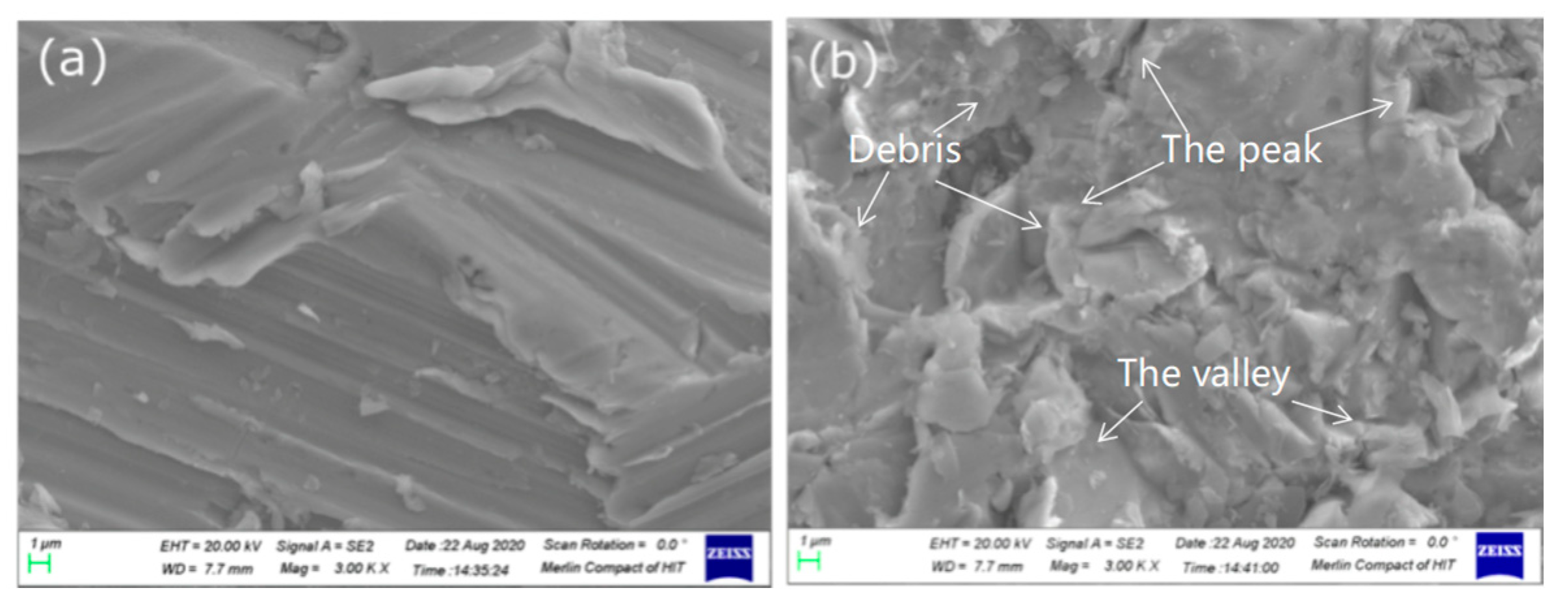
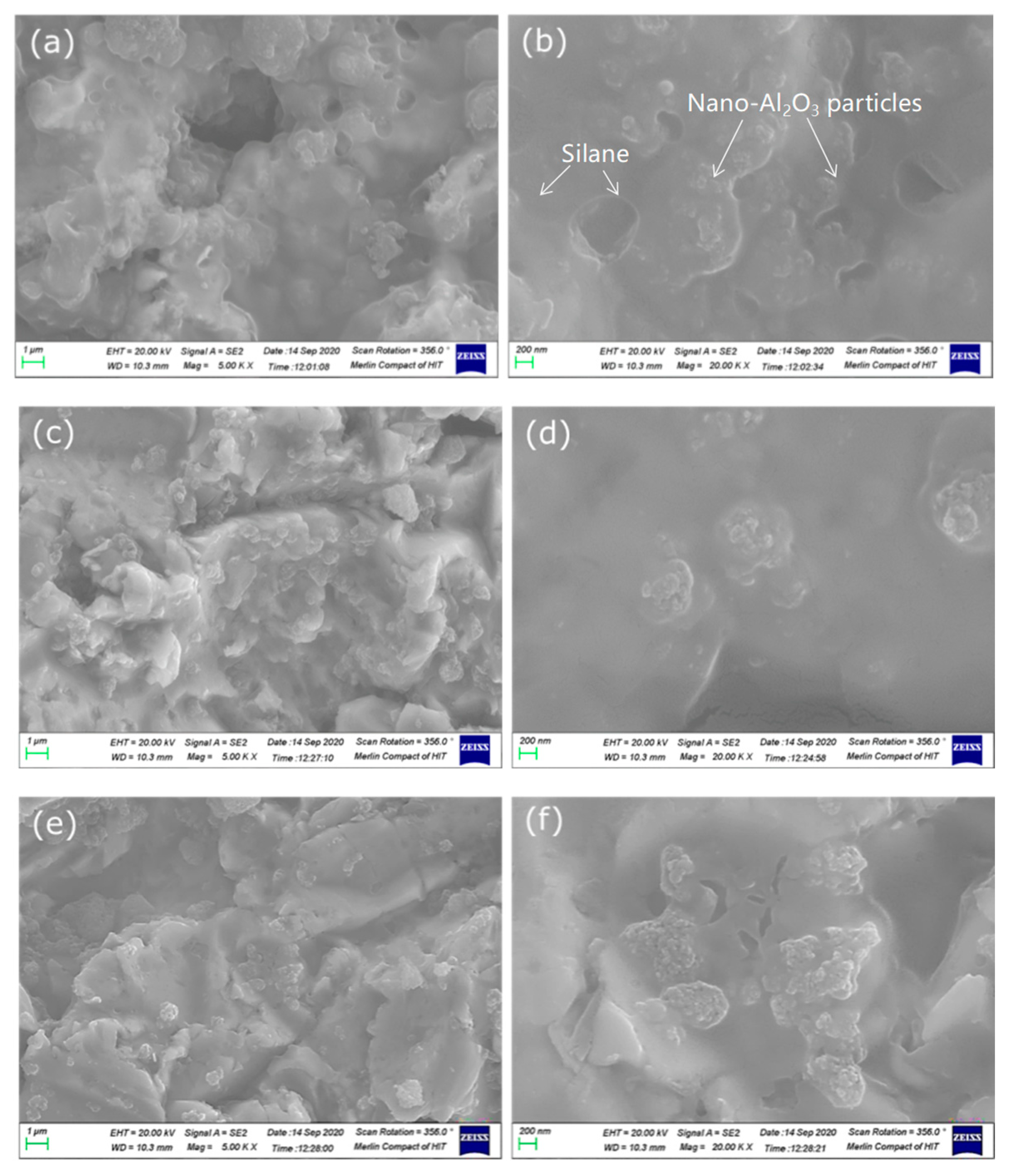

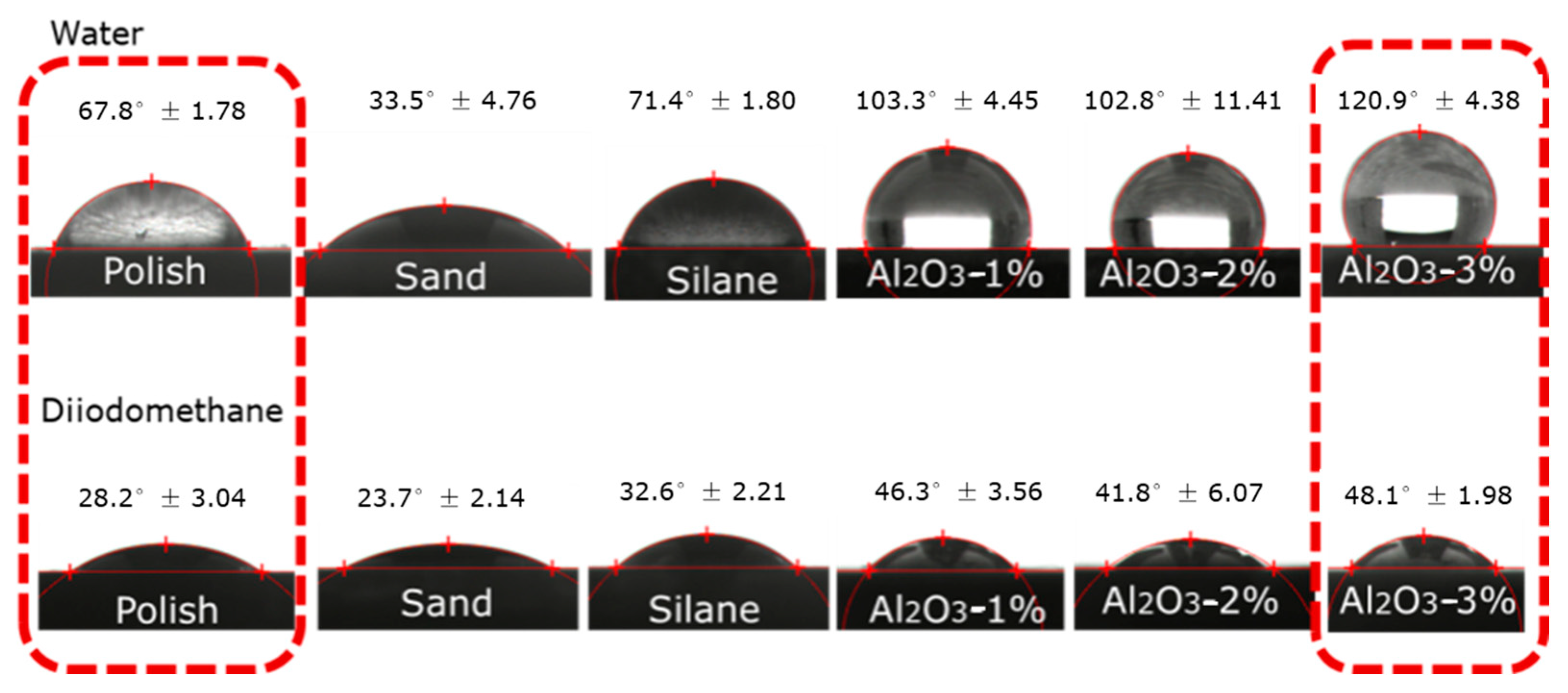

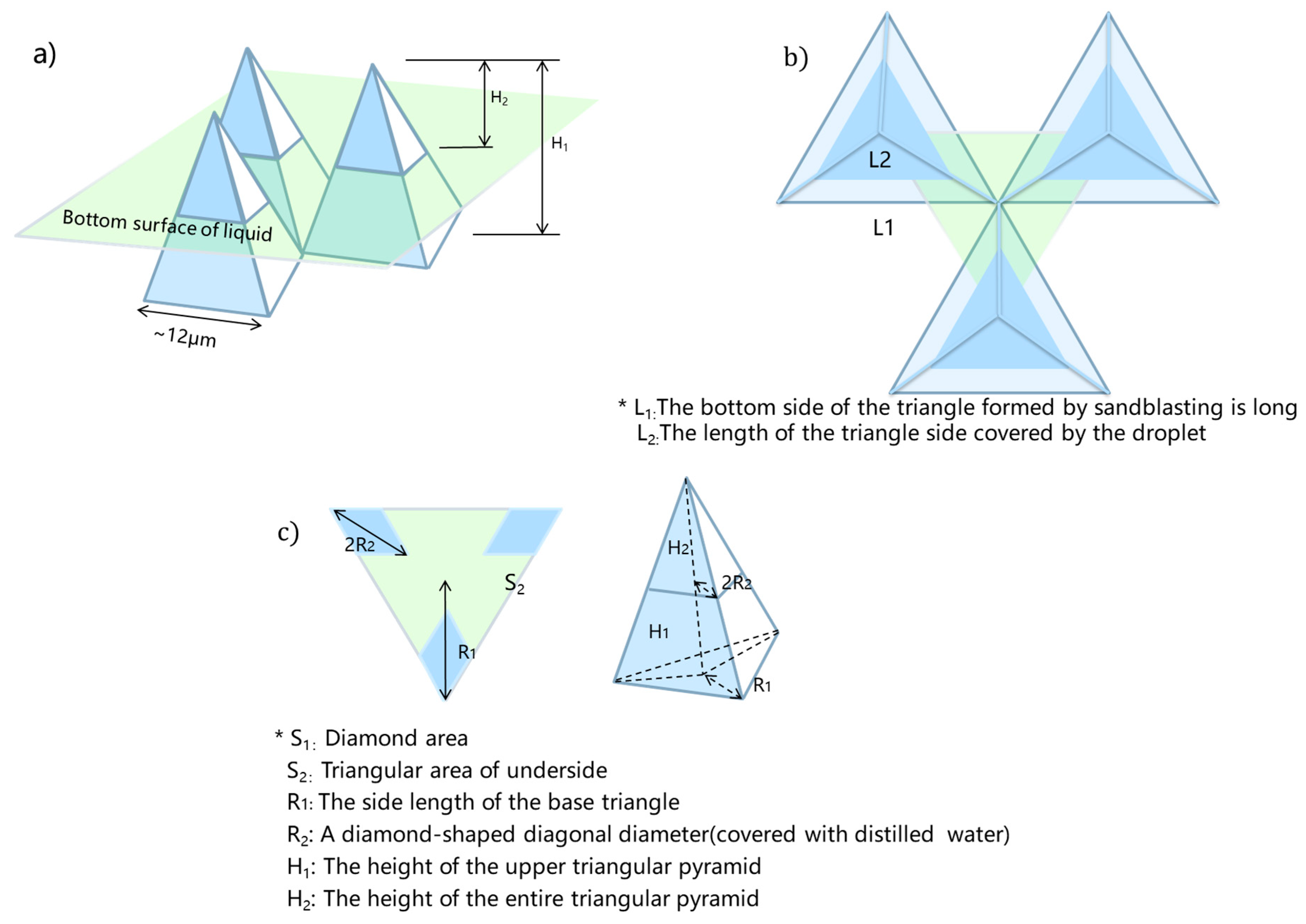

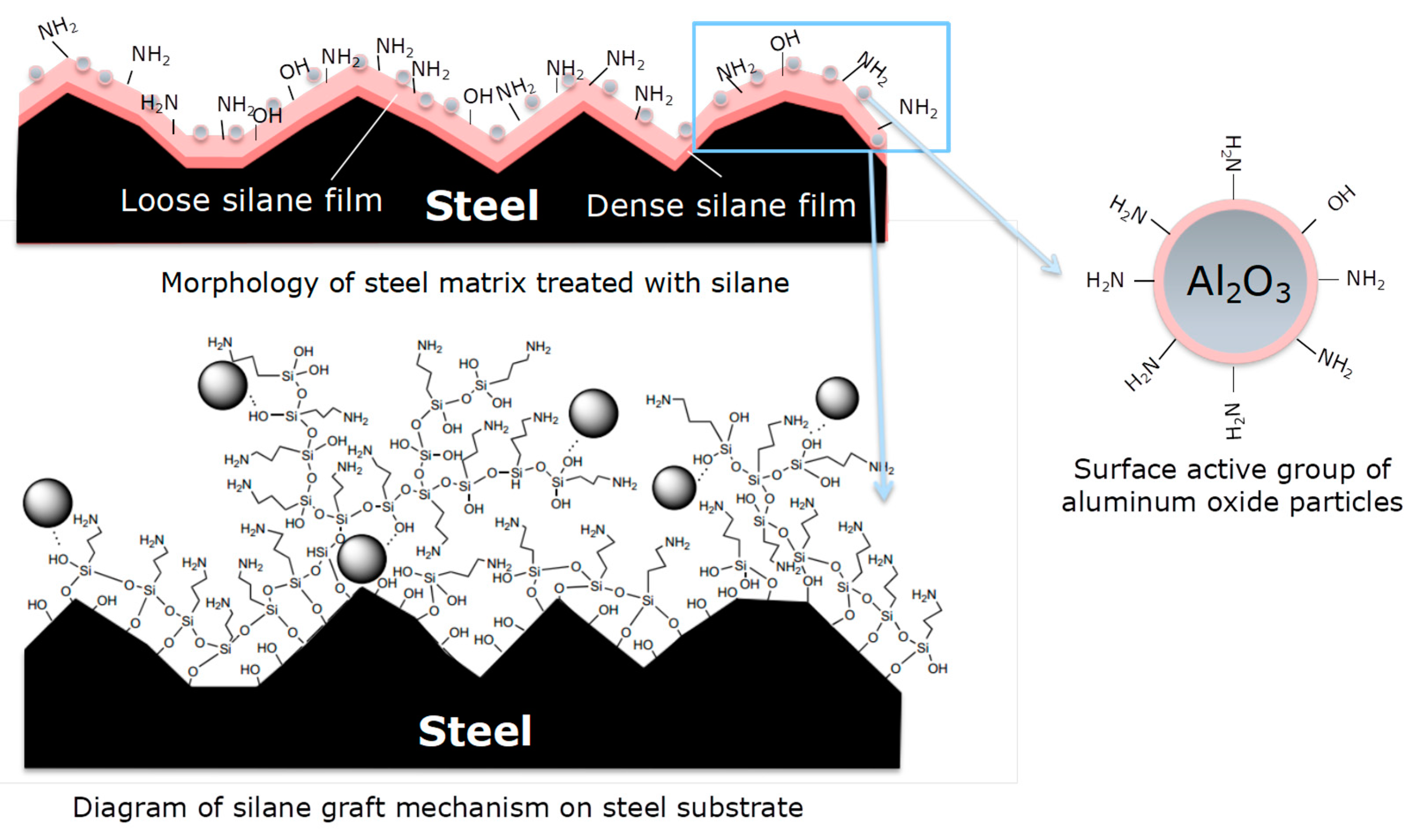


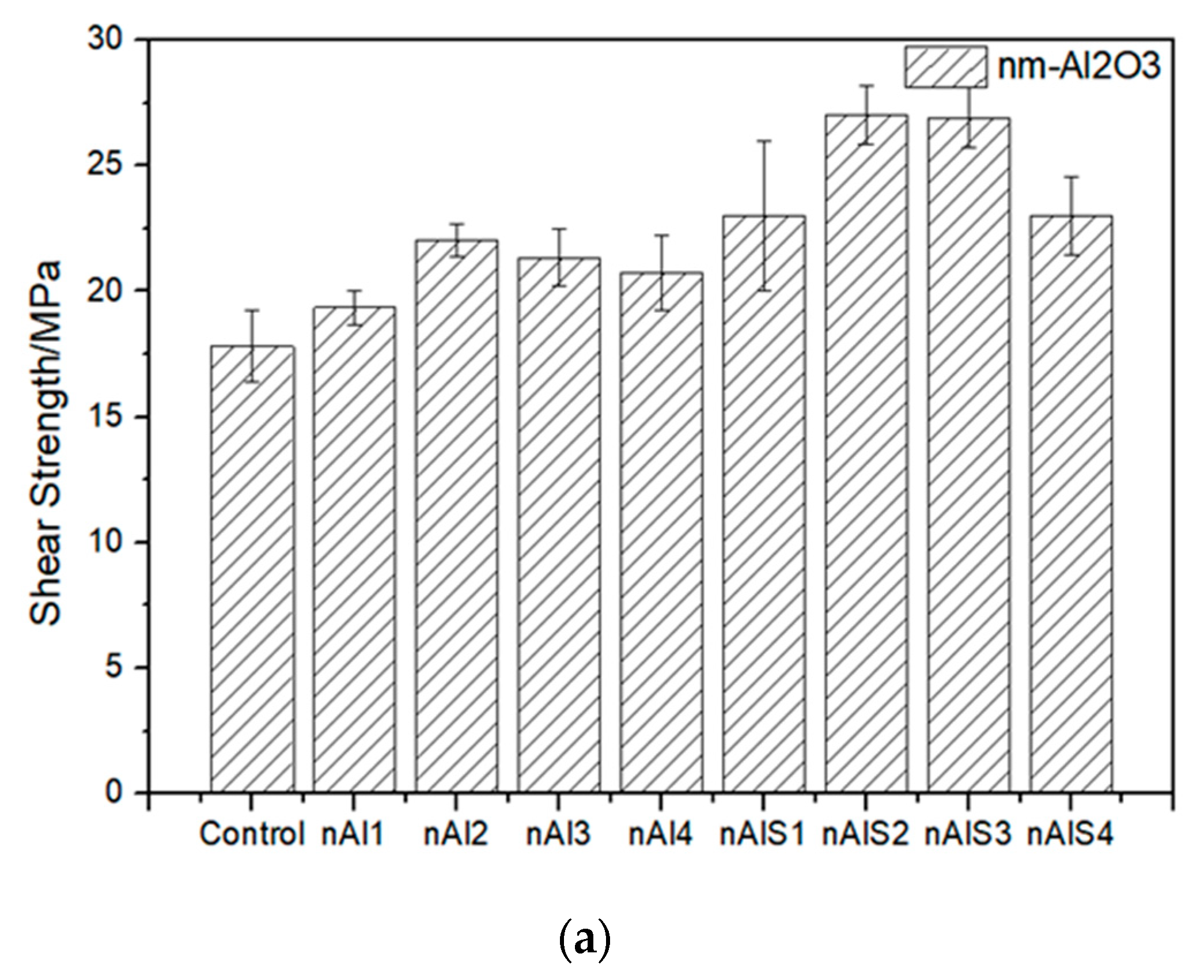


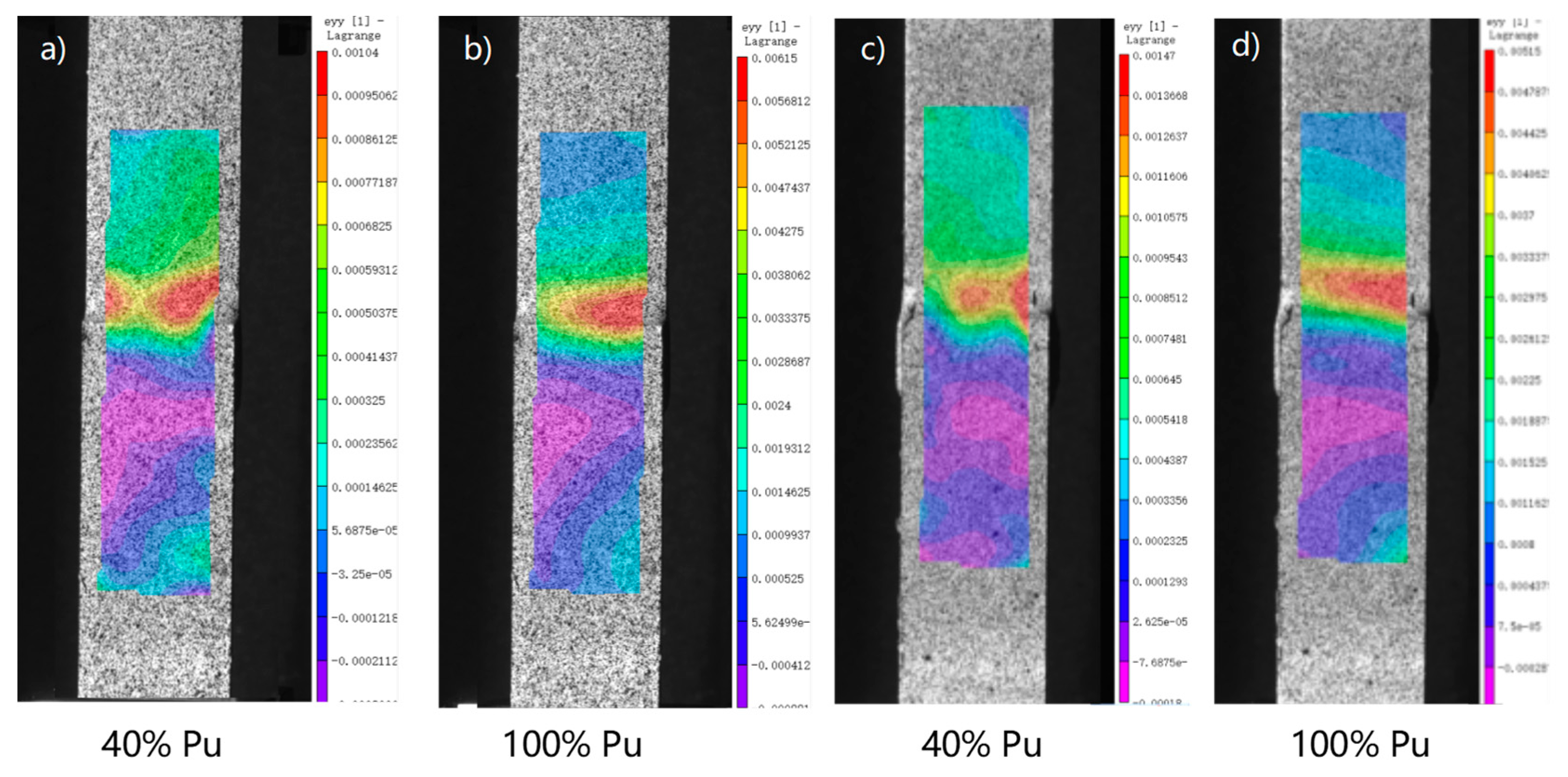
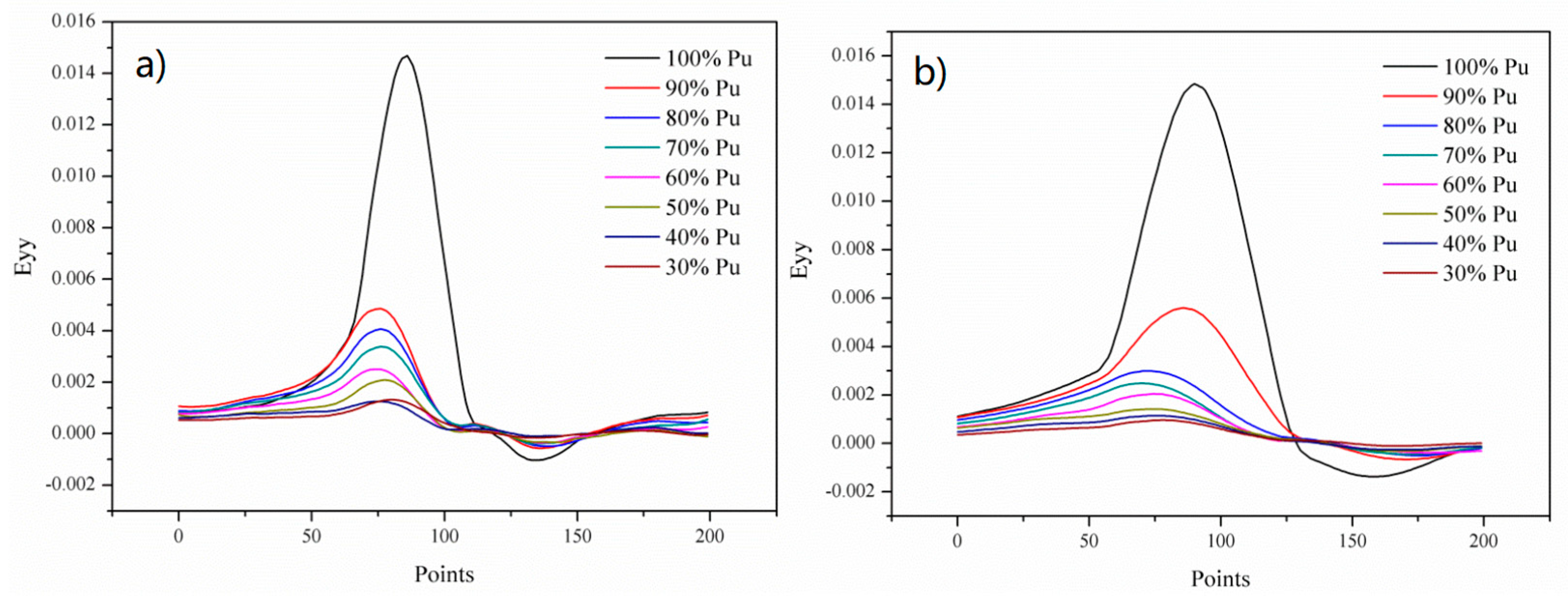
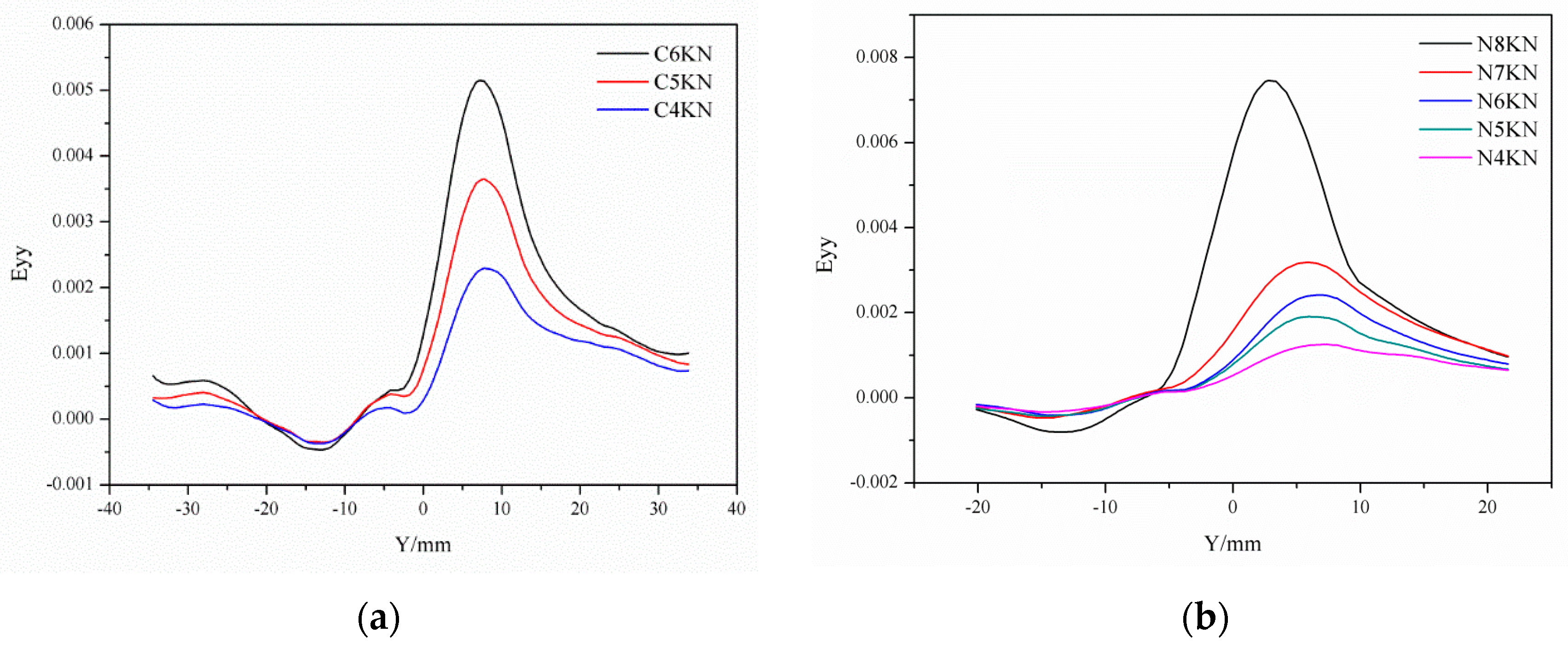
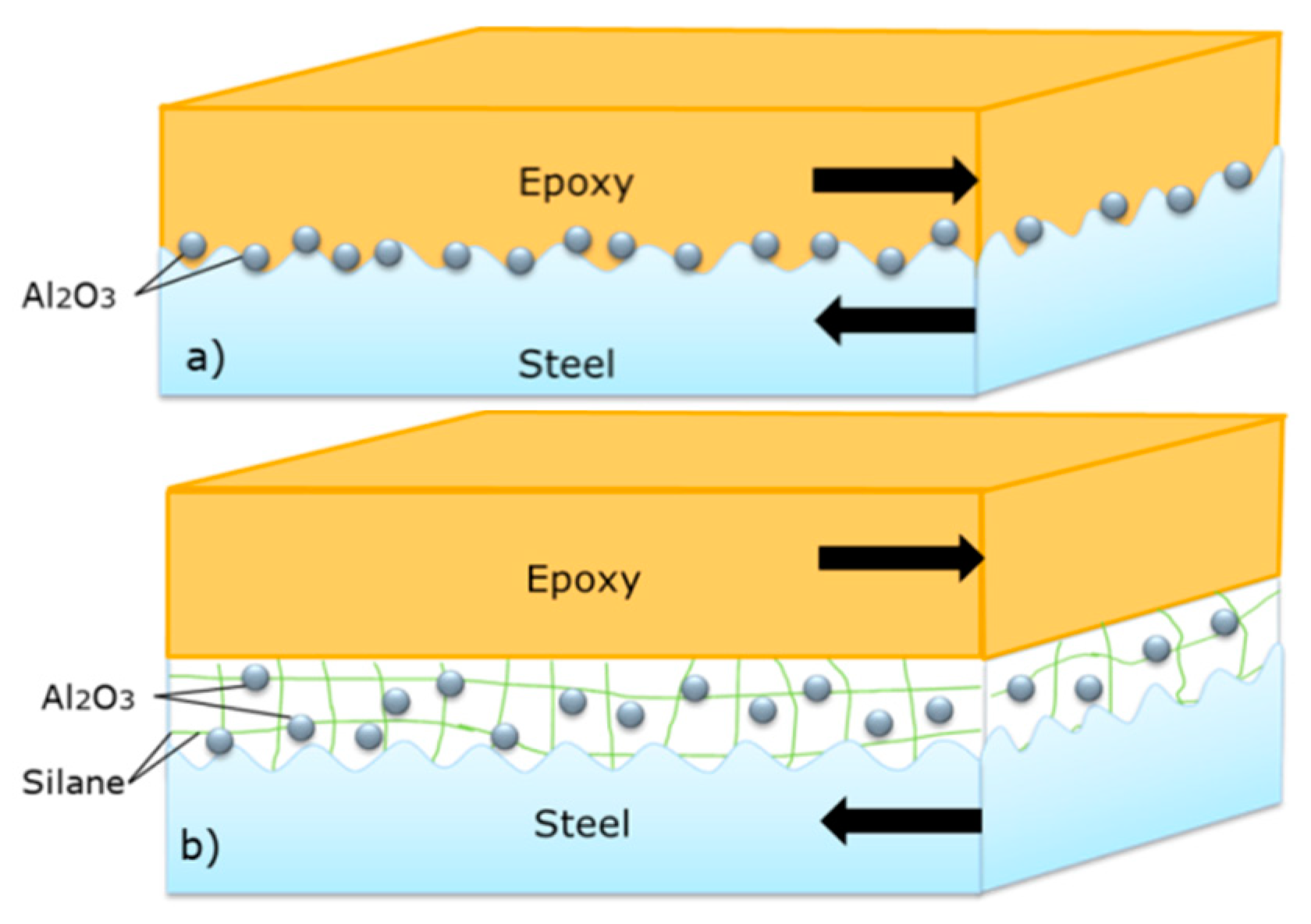
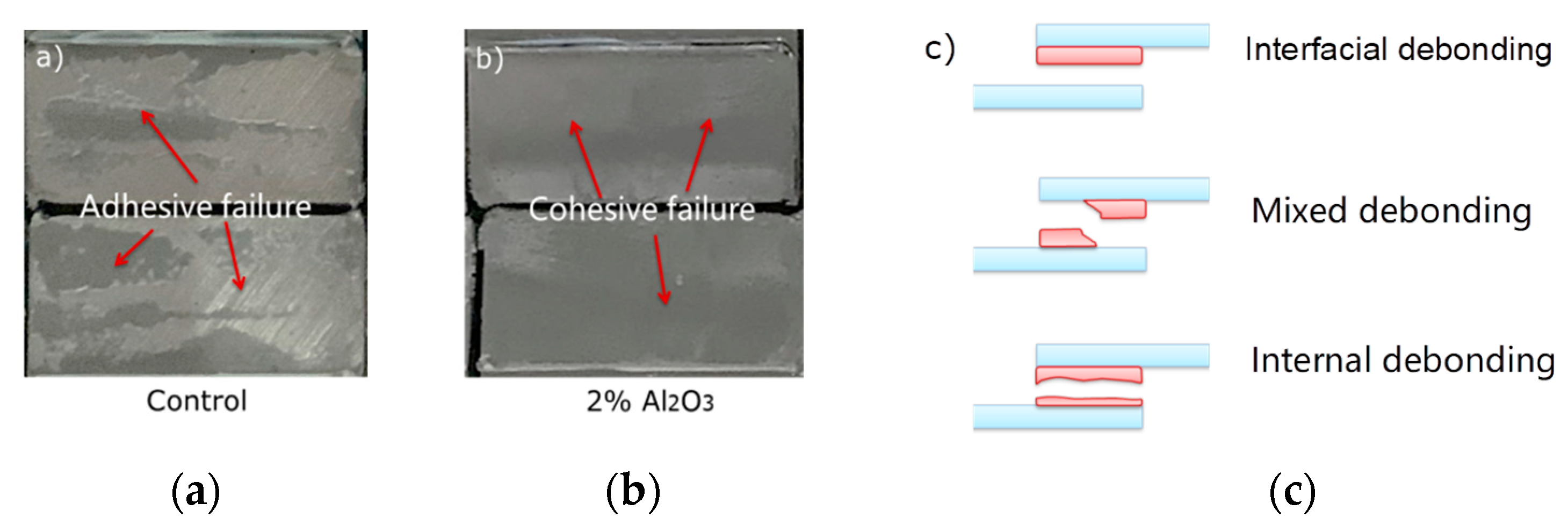
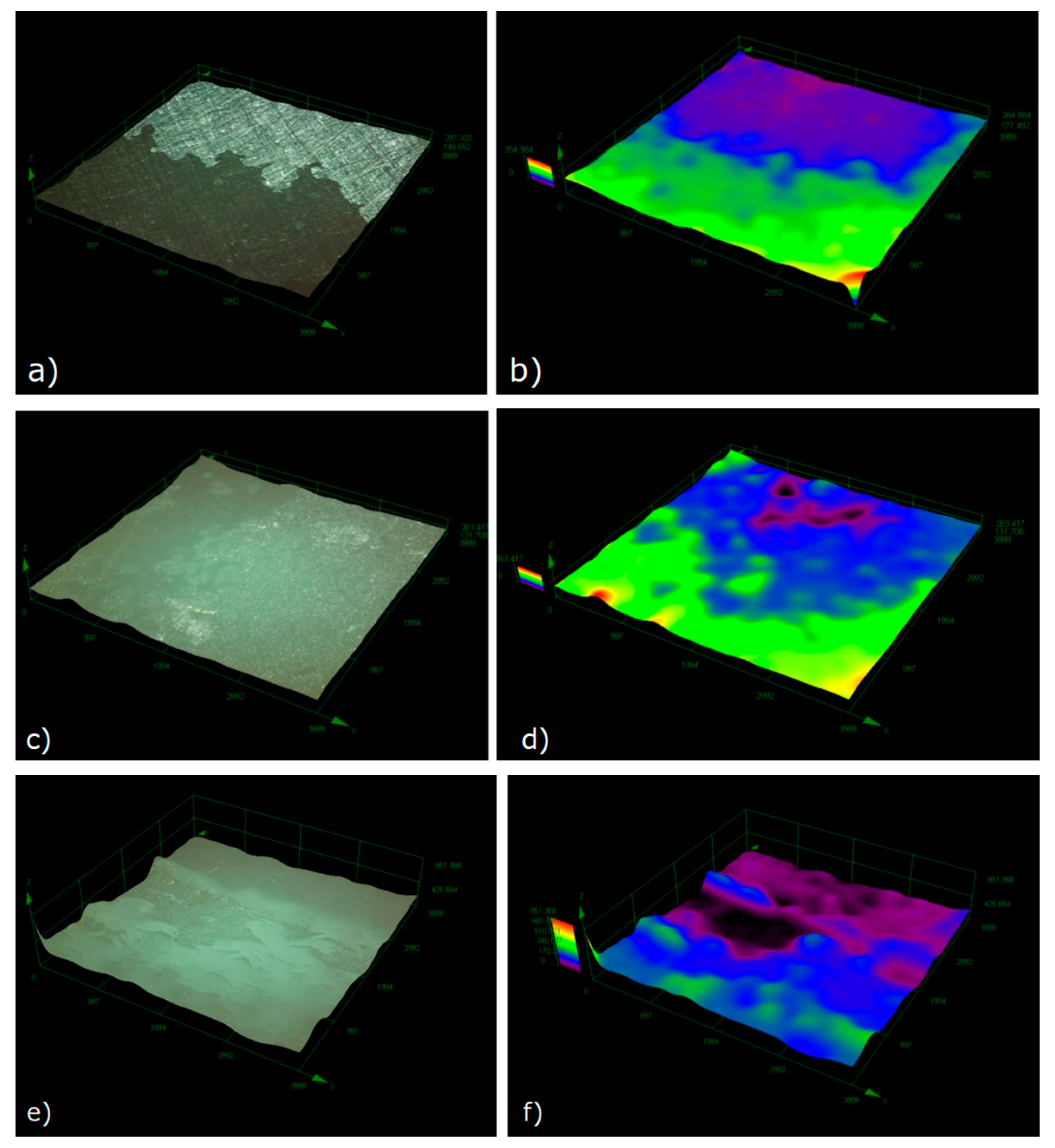
| Grind | Sand Blast | Silane | Nano/Micron Al2O3-Silane | Nano/Micron Al2O3 | |
|---|---|---|---|---|---|
| Grind | √ | ||||
| Sand blast | √ | √ | |||
| Silane | √ | √ | √ | ||
| Al2O3-silane | √ | √ | √ | ||
| Al2O3 | √ | √ | √ |
| Different Solution | Reference Range (cm−1) | Bond Characteristic | |
|---|---|---|---|
| Silane | Silanized-CNT | ||
| 3300 | 3300 | 3570~3050 | OH stretching vibration |
| - | 2965 | 2960~2875 | CH stretching vibration |
| 1636 | - | 1650~1560 | -NH2 |
| - | 1100 | 1150~1040 | C-OH |
| 1048 | 1040 | 1100~1000 | R-O-Si |
| 878 | 955~830 | Si-OH | |
| Sample | Control | nAl1 | nAl2 | nAl3 | nAl4 | nAlS1 | nAlS2 | nAlS3 | nAlS4 |
|---|---|---|---|---|---|---|---|---|---|
| Shear strength | 17.8 ± 1.43 | 19.35 ± 0.66 | 22.04 ± 0.65 | 21.33 ± 1.13 | 20.74 ± 1.47 | 23.01 ± 2.96 | 27.03 ± 1.18 | 26.9 ± 1.21 | 22.99 ± 1.55 |
| Sample | MAl1 | MAl2 | MAl3 | MAl4 | MAlS1 | MAlS2 | MAlS3 | MAlS4 | MAl1 |
|---|---|---|---|---|---|---|---|---|---|
| Shear strength | 21.92 ± 1.2 | 22.8 ± 0.86 | 22.16 ± 0.9 | 22.65 ± 0.45 | 19.95 ± 0.36 | 21.56 ± 1.21 | 20.59 ± 0.41 | 20.74 ± 0.9 | 21.92 ± 1.2 |
Publisher’s Note: MDPI stays neutral with regard to jurisdictional claims in published maps and institutional affiliations. |
© 2022 by the authors. Licensee MDPI, Basel, Switzerland. This article is an open access article distributed under the terms and conditions of the Creative Commons Attribution (CC BY) license (https://creativecommons.org/licenses/by/4.0/).
Share and Cite
Wang, W.; Wang, Z.; Guo, R.; Xian, G. A Novel Treatment: Effects of Nano-Sized and Micro-Sized Al2O3 on Steel Surface for the Shear Strength of Epoxy–Steel Single-Lap Joints. Polymers 2022, 14, 3438. https://doi.org/10.3390/polym14173438
Wang W, Wang Z, Guo R, Xian G. A Novel Treatment: Effects of Nano-Sized and Micro-Sized Al2O3 on Steel Surface for the Shear Strength of Epoxy–Steel Single-Lap Joints. Polymers. 2022; 14(17):3438. https://doi.org/10.3390/polym14173438
Chicago/Turabian StyleWang, Wanru, Zhen Wang, Rui Guo, and Guijun Xian. 2022. "A Novel Treatment: Effects of Nano-Sized and Micro-Sized Al2O3 on Steel Surface for the Shear Strength of Epoxy–Steel Single-Lap Joints" Polymers 14, no. 17: 3438. https://doi.org/10.3390/polym14173438






